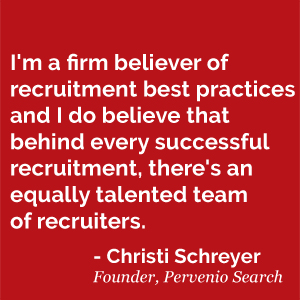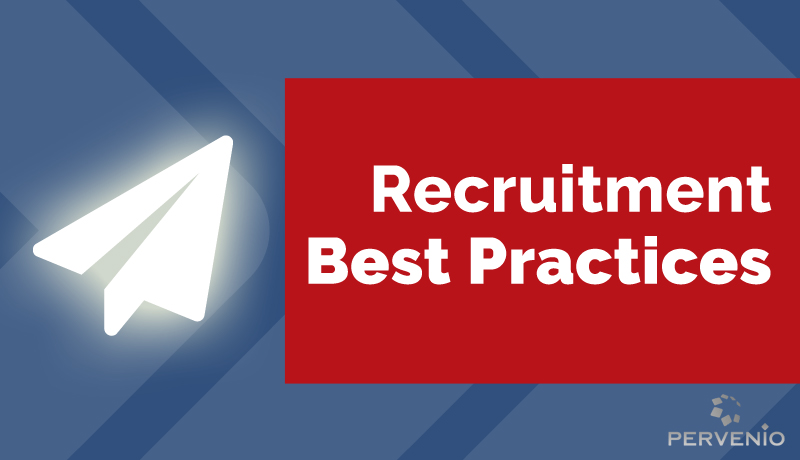6 Recruitment Best Practices To Boost Your Recruitment ROI
One of the key responsibilities of recruiters is to assist organizations by identifying, attracting and selecting the best talent who can meet the organizational needs and contribute in achieving short or long term strategic goals. Recruitment is an art that need to be practiced over and over again and mastered over time. But mere practicing doesn’t make a recruiter a perfect recruiter.
“Practice does not make perfect. Only perfect practice makes perfect.” – Vince Lombardi
In other words, we need to follow the best practices to achieve the pinnacle of success or else perfection will be a distant dream.
What are the current recruitment challenges facing modern day organizations?
- As the global talent shortage widens, talent acquisition has become a challenging task.
- Demand for faster hiring has become a de facto priority for every organization.
- No matter what, hiring managers look for shorter time-to-productivity.
What’s the actual recruitment scenario in U.S.?
- Time – iCIMS and Workable data suggests that the average time to fill an open position in U.S. is around 43 to 44 days.
- Cost – In U.S. the average cost of bad hire is estimated to be more than $50,000.
- Quality & Productivity – Research suggests that the average time for a new employee to reach full productivity is 20 weeks for professionals and 26+ weeks for executives.
Considering the above numbers to be the benchmark, one might be wondering how to be at par with (or even beat) these numbers to yield maximum benefits? There are no shortcuts!
As per our founder, Christi Schreyer – SWP, HCS, “I’m a firm believer of recruitment best practices and I do believe that behind every successful recruitment, there’s an equally talented team of recruiters.”
6 Research-Backed Recruitment Best Practices To Hire Star Performers
(NOTE: Earlier we’ve already discussed the importance of Employer Branding and Behavioral Interviewing. These two critical topics equally fall under the recruitment best practices. Do take a look at them as well.)
-
Define a clear process before you start the recruitment activities
To be honest, every organization these days have a set of processes laid down in their handbooks. Yet the burning question remains – does the HR team actually follow them? Processes need to be religiously followed, revisited time-to-time and streamlined to suit the needs of the hour. Like any other business processes, recruitment too should be a process driven approach which should be designed and optimized as per the size and needs of the organization.
-
Understand the candidate requirements clearly
Before you jump on advertising the open position in job boards and social networks or undertake other recruitment advertising activities, take some time off to clearly understand the roles and responsibilities of the candidate to be hired. This is a critical step in avoiding bad hires. As a recruiter, you may not be a subject matter expert in big data or iOS app development. But you should try to collaborate with the respective hiring manager and establish a friendly communication channel so that you get a clear understanding of the candidate’s KPAs.

-
Create an attractive job posting
Once you are confident about the ideal candidate, draft the job post keeping in mind the marketing aspects. Per a survey by CareerBuilder, 75% of candidates opined that look and feel of a job posting has influenced their decision to apply for a job. Hence, try to make your job post intuitive by optimizing it as much as possible. Here are a few job posting tips to help you develop an attention grabbing job post:
# Define your Employer Value Proposition clearly to attract the best talents.
# Make job posts visually appealing (UX friendly) by using bullet points and graphics.
# Use conventional job titles.
# Optimize the posting by using relevant keywords.
# Define the skill sets clearly.
# Last and not the least, don’t mix job posts with legal documents. -
Gain maximum reach by using various sales channels
Advertising the open position in job boards is job half done. Don’t rely on the “post-and-pray” approach. Your next step should be to gain maximum mileage by sharing the post in relevant social media channels to attract the right candidates to apply for the job. While posting in social or professional networks, make sure to use hashtags, a suitable graphic, embed a link back to the job post and make sure you post at the correct time of the day to maximize the reach! And don’t shy away from asking your colleagues (including hiring managers) to retweet or share your post. You may also adopt other sales techniques like cold calling, emailing or approach passive candidates via private messages to see if they’re looking for a job change. After all, as per LinkedIn, 75% of the talent pool is passive!
-
Adopt an innovative, diversified, data driven approach
Gone are those days when markets were less robust and demands were reasonable. We now face a more challenging situation. Global talent shortage is on the rise. Demand for experienced, highly skilled, potential candidates have sky-rocketed. Hence, don’t rely on outdated approaches. For example, most companies rely on their candidate database but fails to realize that every year a chunk of the contact information gets deprecated. Change of emails or phone numbers make the contacts null and void. Refresh contact information on a regular basis. While entering new contacts in the database, look for duplicate entries. All said, most organizations are yet to embrace an innovative approach. Diversification is a necessity, not an option anymore. A smart data-driven approach is the new normal. Taking help of CV parsing technology or similar smart techniques like predictive recruitment analytics can save thousands of dollars of man-hours. Additionally, it can help screen the candidate pool and help spot the closest match.
-
Create a seamless, interactive, dynamic onboarding process
When I joined a reputed company eleven years back, I had to spend 15 days in an archaic orientation process which, for once, compelled me to rethink if I should really stay with the organization. Did you know that organizations with a standard onboarding process tend to experience 50% greater new hire retention? Onboarding isn’t merely a wastage of time. It helps new employees understand, acclimate and engage with the organization. Pervenio’s talent leaders suggest organizations to design and develop an onboarding process which is semi-automated, interactive, fun filled and dynamic in nature. Challenge is to upgrade the current process to meet today’s demand. Here are a few steps you may take to optimize your onboarding process:
1. Whatever the size of your company be, it should involve fewer paperworks.
2. A task management system should automate the setup process complexly.
3. Prepare a welcome kit for the new hires.
4. Company wikis may come in handy to create documents required for the new joinees.
5. Pre-recorded videos or presentations (How tos, Tutorials, Walkthroughs) should be used for training employees on in-house software or brief them about organizational culture and policies.
6. Many organizations are even allowing employees to take a virtual tour of their office to get familiar with the environment.
Since 1999, our talent acquisition experts have been helping organizations of all shapes and sizes to align their talent acquisition strategy and recruit the best talents. Our approach is ROI centric and we ensure that our clients get complete value for money. If you need to streamline your recruitment strategy to attract the best talents to join your organization, please feel free to schedule a consultation.



